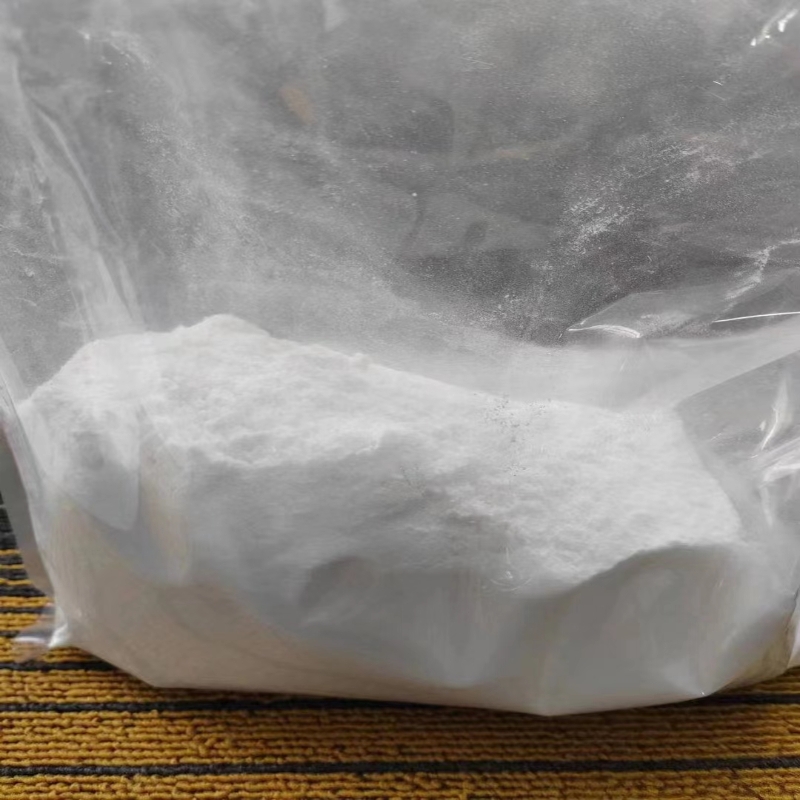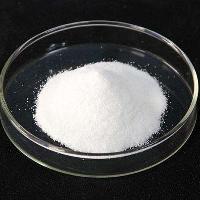-
Categories
-
Pharmaceutical Intermediates
-
Active Pharmaceutical Ingredients
-
Food Additives
- Industrial Coatings
- Agrochemicals
- Dyes and Pigments
- Surfactant
- Flavors and Fragrances
- Chemical Reagents
- Catalyst and Auxiliary
- Natural Products
- Inorganic Chemistry
-
Organic Chemistry
-
Biochemical Engineering
- Analytical Chemistry
- Cosmetic Ingredient
-
Pharmaceutical Intermediates
Promotion
ECHEMI Mall
Wholesale
Weekly Price
Exhibition
News
-
Trade Service
Written by - Li Ying, Liu Shu Ji edited - Wang Sizhen, Fang Yiyi edited - Wang Sizhen
pain It is a conscious, subjective experience that encompasses both pain sensation and emotional experience, usually by nociceptors ( Nociceptor) and nociceptor pathway activation
.
A large body of evidence suggests that the activation of nociceptors does not necessarily trigger pain perception, and the occurrence of pain sensation requires the presence of negative emotional experiences [1].
However, behavioral indicators to assess the emotional experience of pain in animals are still lacking
in reported animal pain models.
On the other hand, the anterior cingulate cortex (ACC) is an important brain region for negative emotional memory storage , which receives extensive projections
from the blue spot (Locus Coeruleus, LC).
LC is highly correlated with alertness and acuity regulation and plays an important role in the establishment of pain memory [2].
However, little is known about the neurotransmitters involved in the formation and consolidation of pain memory through the LC-ACC neural circuit, and what role astrocytes within ACC play in pain memory
.
In order to solve the above problems, Professor Li Ying's research group of the City University of Hong Kong (City University of Hong Kong) recently arrived Communications Biology published a title titled "Adrenergic signaling to astrocytes in anterior cingulate cortex contributes to.
" pain-related aversive memory in rats", reporting that ACC astrocytes adrenergic signaling is involved in pain-related aversive memory formation
in rats.
They intensively studied this topic by establishing a behavioral paradigm of pain-related aversion memory in rats, regulation of LC-ACC neural circuits, chemical genetic regulation of astrocyte, and norepinephrine β2 receptor knockdown.
First, Professor Li's team established a behavioral paradigm for assessing pain-averse memory in rats
.
He uses colorectal distention (CRD) to induce visceral pain, combined
with conditioning place avoidance (CPA) behavior.
After four days of training, rats learned visceral pain associated with memory in specific locations, developed disgust at CRD-trained sites and avoided
them.
On this basis, the authors used optogenetic techniques to regulate the LC-ACC neural circuit and observed the role
played by LC neurons specifically projected to ACC in pain-averse memory.
First, the authors injected AAV2-retro-cre virus at ACC, which can retrograde back to LC and pass through the Cre-DIO system The AAV2/9-Dio-ChR2-EYFP virus injected within LC binds to express the EYFP fluorescent protein, labeling the LC projected to the ACC Neurons
.
At this point, the use of optogenetically specific activation or inhibition of this group of LC neurons projected to ACC can significantly enhance or reduce pain-averse memory, as well as LC and ACC in rats Expression of endoneuronal activity marker protein C-FOS.
It suggests that the LC-ACC neural circuit specifically regulates the establishment and consolidation of pain-averse memories in rats (Figure 1).
Figure 1: Optogenetically activated LC projection to ACC neurons enhances pain-averse memory in rats
(Credit: Iqbal Z, et al., Commun Biol, 2023)
LC to ACC projections are norepinephric neurons ( Noradrenergic neuron, NEergic Neuron), known to be widespread norepinephrine β 2 receptors (β 2 adrenergic) within astrocytes receptor, β2AR), so how are astrocytes within ACC involved in pain-averse memory in rats? Next, the authors injected the GFAP-hM4Di virus into rat ACC to specifically activate the astrocytes Gi pathway by chemogenetic techniques to inhibit astrocytes activity
.
The results showed that inhibition of ACC astrocytes could not only effectively reduce pain aversion memory in rats, but also counteract the memory enhancement effect of optogenetic activation of LC-ACC projection neurons, suggesting that astrocytes in ACC are the key targets for pain aversion memory formation (Figure 2).
Figure 2: Chemical genetic activation of the astrocytes Gi pathway inhibits pain-averse memory enhancement caused by LC neuron activation (Source: Iqbal Z, et al.
, Commun Biol, 2023)
To further explore the mechanism of astrocytes β2AR in pain-averse memory, the authors used microRNA-based ones RNA interference (miRNAi) technology selectively knocks down β 2AR
expressed by astrocytes.
Immunofluorescence staining showed that 89% of astrocytes expressing GFAP β2AR had been successfully knocked down, and when co-stained with neuronal nuclei marker NeuN, it was in ACC Off-target expression in neurons is only 1.
84%.
The above results confirm that miRNAi specifically knocks down astrocytes β 2AR with little effect
on neuronal cells.
Behavioral results in rats showed that after knocking down ACC astrocytes β2AR, the rats' pain-averse memory decreased
significantly.
It was revealed that norepinephrine binding to ACC astrocytes norepinephrine β 2 receptors is necessary for pain-averse memory production (Figure 3).
。
Figure 3: Specific knockdown of β2ARs in ACC astrocytes inhibits pain-averse memory (Source: Iqbal Z, et al.
, Commun Biol, 2023 Article
conclusion and discussion, inspiration and prospects
In summary, Professor Li established a behavioral paradigm for assessing painful negative memory in rats, and on this basis, they further discovered the indispensable role of anterior cingulate cortex (ACC) astrocytes in pain-averse memory, which binds to norepinephrine β2 receptors The norepinephrine released by blue spots (LCs) into ACC neurons regulates synaptic plasticity in neighboring ACC neurons, thereby affecting the formation and consolidation
of pain-averse memories.
In the past, the study of pain memory has focused on neurons, while ignoring the influence and regulation
of neurons by astrocytes.
Astrocytes not only metabolize lactic acid through glycolysis to provide energy to neuronal cells, but also act as a "third synapse" to release neurotransmitters such as glutamate, and the mechanism of astrocytes-neuron interaction will be further elaborated
in the future.
org/10.
1186/s12974-023-02690-4
Corresponding author: Professor Li Ying (left); Team members: Dr.
Zafar IQBAL (left), Liu Shu (right).
(Photo courtesy of Professor Li Ying's team at City University of Hong Kong).
Welcome to scan the code to join Logical Neuroscience Literature Study 2
Group Note Format: Name--Field of Study-Degree/Title/Title/Position
Welcome to scan the code to follow the "Lanhan Academic News" public account to join the community, please add WeChat: LanHanBiotech and remarks: name - professional
Selected articles from previous issues
[1] Redox Biol—Xinong Liu Zhigang et al.
revealed for the first time that methionine-restricted diet can improve AD cognitive dysfunction
[2] Science - heavy! A history of obesity induces epigenetic changes in the innate immune system and exacerbates neuroinflammation
[3] The SLEEP-Han Fang/Yu Hongjie team estimated the incidence of narcolepsy for the first time in China and found that it increased during the 2009 H1N1 influenza pandemic
[4] J Neurol—Brain microstructure changes in patients with essential tremor and their correlation with clinical features: a diffuse kurtosis imaging study
[5] Sci Adv—Duke University Jieyu Wu et al.
found that TMC channel proteins delay neuroaging through GABA signaling
[6] J Neurosci—Guan Xiaowei/Ge Feifei team of Nanjing University of Chinese Medicine discovered a new central mechanism of methamphetamine withdrawal anxiety
【7】 Neuroepidemiology—Zhao Guohua's research group analyzed the trend of disease burden of Parkinson's disease in China from 1990 to 2019
[8] The iScience—Wu Guangyan/Li Hongli/Sui Jianfeng team found that the anterior limbic cortex affects itching by regulating attention
[9] J Neurosci-NIH Zhengxiong Xi's team discovered a new mechanism of the non-addictive effect of cannabis
[10] Autophagy-Yingmei Lu/Han Feng team reveals new mechanisms of chemotherapy-related cognitive dysfunction
NeuroAI Book Club[1] NeuroAI Reading Club Launched—Explore the frontier intersection of neuroscience and artificial intelligence
The new issue sets sail, welcome to submit[1] Brain-X Cross-Brain Science: New Journal Officially Launched!
Selected from previous research training courses【1】High-scoring SCI Article and Tender Drawing (and AI Software Drawing) Seminar (January 14-15, 2023, Tencent Online Conference)
【2】Seminar on Multi-omics Data Integration Mining and Analysis (January 13-15, 2023, Tencent Online Conference)
Learning materials【1 Collection + Free—Brain Science Video Course & 9 Major Surgical Modeling and Cell Molecular Research Handbook Materials
References (swipe up and down to view).
Nociception, Pain, Negative Moods, and Behavior Selection.
Neuron 87, 474-491 (2015).
[2] Wang J, Zhang X, Cao B, Liu J, Li Y.
Facilitation of synaptic transmission in the anterior cingulate cortex in viscerally hypersensitive rats.
Cereb Cortex 25, 859-868 (2015).
End of article







